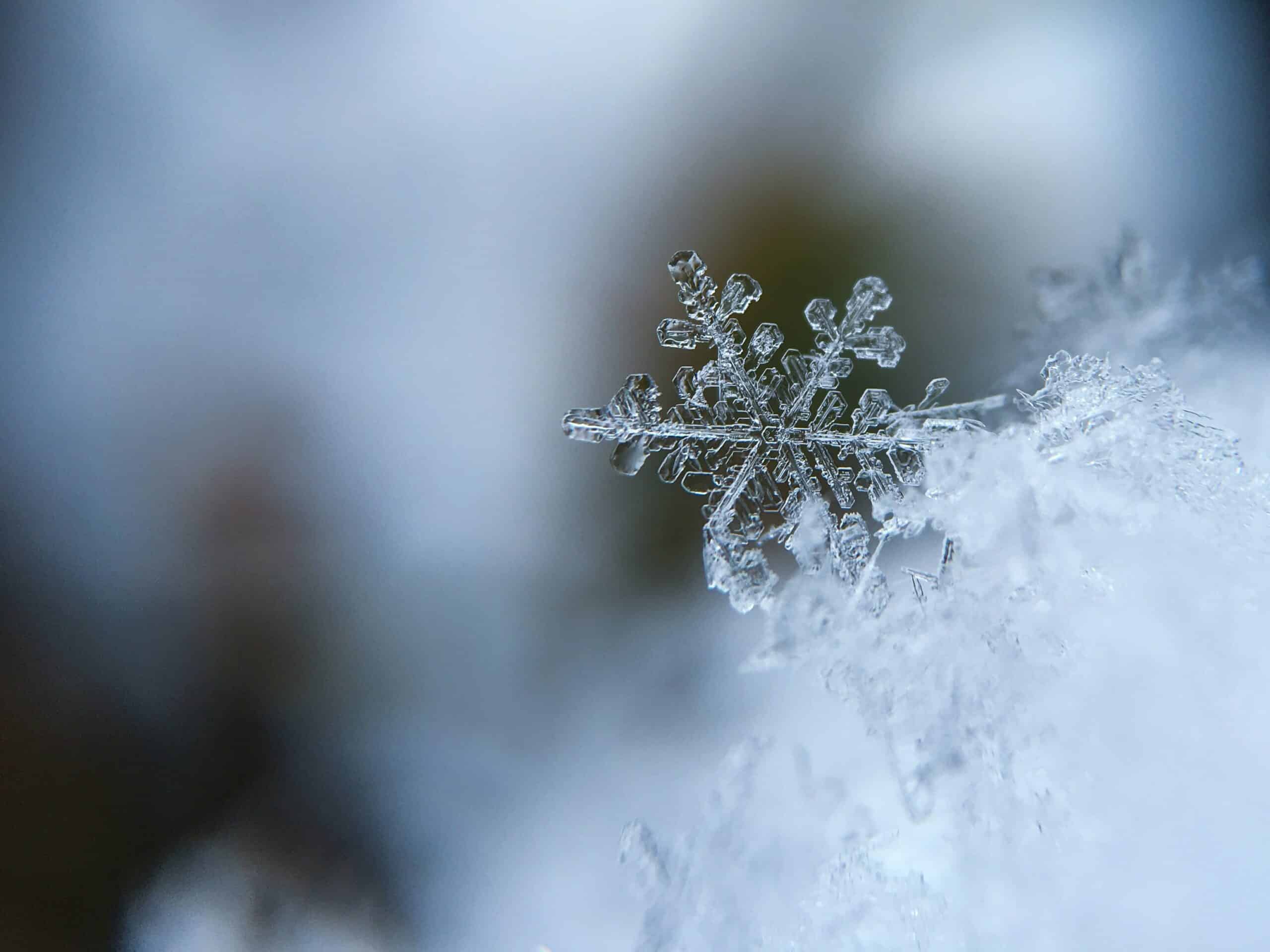Snow-in-Summer is a beautiful and delicate flower, but one that requires special care to thrive. Symbolically, it represents freshness and renewal of life; its pale blossoms are a reminder of the fragility of nature, while also inspiring us to take action to protect it. Every gardener should have a Snow-in-Summer plant in their garden – not only for its beauty, but also as an act of stewardship towards nature.
As specialists in botany and gardening, we understand the responsibility that comes with growing Snow-in-Summer plants. From soil preparation and planting instructions to effective pruning techniques, we’ve compiled our best advice for how to grow and care for these special flowers.
By following our step-by-step guide, you can create a thriving Snow-in-Summer garden with ease! With just a little bit of knowledge and effort on your part, you can fill your garden with these exquisite blooms that will bring joy throughout the growing season.
What Is Snow-In-Summer?
Snow-in-summer is a captivating plant that adds a delightful charm to any outdoor space. Its white and silver foliage, along with its star-shaped flowers, creates an eye-catching display of delight. As gardeners know, the beauty of this plant comes from the knowledge that it needs to be cared for properly in order to thrive. By following the right steps, snow-in-summer can be grown successfully and bring years of enjoyment.
First and foremost, it’s important to understand what snow-in-summer is and how it can best be grown. This low growing perennial is native to Europe and likes full sun exposure in well drained soil. To ensure its growth is healthy, it should be planted after the last frost of spring in an area that gets at least 6 hours of sun each day. When planting snow-in-summer, ensure there is good air circulation around the plants as they need plenty of sunshine to stay healthy. The soil should also be kept moist but not too wet or it will rot the plants’ roots.
The key to keeping snow-in-summer happy is regular maintenance such as deadheading spent blooms and trimming back leggy foliage when necessary. Additionally, providing enough water throughout summer helps keep these plants looking their best; once established they can tolerate drought conditions but occasional watering during dry spells helps maintain vigorous growth. With just a bit of care, this beautiful plant will flourish in any garden!
Where To Plant Snow-In-Summer
Snow-in-summer is a great addition to any garden. Not only does it provide a beautiful backdrop of white flowers and silver foliage, but it is also relatively low maintenance. When it comes to successfully growing snow-in-summer, the location of the plant is key.
When deciding where to plant snow-in-summer, chose a spot that receives full sun, with at least 6 hours of direct sunlight each day. This plant can also tolerate some light shade in the afternoon if necessary. Make sure to avoid areas with heavy foot traffic or that are prone to flooding as these can damage the tender roots of this flower.
Snow-in-summer will also require well draining soil in order to thrive. The soil should be on the dry side; too much moisture can cause root rot and other diseases. To ensure adequate drainage, you may need to amend your soil with compost or sand before planting your snow-in-summer plants. With proper location and soil preparation, you will soon have a garden full of beautiful and hardy snow-in-summer plants!
Now that we’ve discussed optimal planting locations for snow-in-summer plants, let’s move on to discussing their soil requirements…
Soil Requirements For Snow-In-Summer
Snow-in-summer is a beautiful, delicate flowering plant. Its white blooms are a sight to behold in the garden and can add a touch of grace and serenity to any outdoor space. But just like any other flower, this one needs the right soil conditions to thrive. Let’s take a look at what kind of soil will help your snow-in-summer plants grow strong and healthy.
The ideal soil for snow-in-summer should be well-draining, but still hold enough moisture to keep the plant hydrated. You’ll want to make sure it has plenty of organic matter too, such as compost or peat moss, so that the roots have something to cling onto as they grow. The pH level should be slightly acidic with a pH between 6 and 7, which can be tested easily with a storebought test kit. If your soil is too alkaline or neutral, you can amend it with peat moss or sulfur to bring the pH down.
Once you’ve got the soil ready for planting, you’ll also want to fertilize it periodically throughout the growing season for optimum health and growth. A balanced fertilizer with an equal ratio of nitrogen, phosphorus, and potassium is best for snow-in-summer plants as it provides all of the essential nutrients they need without overfeeding them or causing any nutrient deficiencies. And finally, don’t forget about mulching! A layer of mulch around your plants will help retain moisture in the soil while also preventing weeds from taking root nearby.
With these simple tips in mind, you’ll have your snow-in-summer plants thriving in no time! Now let’s take a look at how much sunlight they need…
Sunlight Requirements For Snow-In-Summer
When growing snow-in-summer, it’s important to take into account the sunlight requirements. This is because these plants need a certain amount of sun for optimal growth and flowering.
Snow-in-summer should receive full sun for at least 6 hours each day. It may even tolerate up to 8 hours of direct sun per day. If planted in a shady spot, the plant may not flower or will produce fewer blooms than usual.
For those living in hotter climates, you might want to consider planting snow-in-summer in an area which receives morning sun and afternoon shade. This will help protect the plant from the intense midday sun and heat. Additionally, you can also add mulch around the base of your plants to help keep them cool during hot summer days.
TIP: When planting snow-in-summer near other plants, make sure that they are spaced apart enough so that their foliage doesn’t overlap and no one plant is competing with another for sunlight.
How To Water Snow-In-Summer
Snow-in-summer, or Cerastium tomentosum, is a bright and beautiful flowering plant that is commonly found in gardens. It is estimated that over 200 species of Cerastium exist around the world, captivating gardeners with its unique white flowers and grey foliage. Now that you know about this delightful perennial, it’s time to discuss how to water it correctly.
When it comes to watering snow-in-summer, one should be mindful of the amount they give as too much water can cause root rot. As a general rule, this plant should be watered regularly during its growing season but only when the topsoil is dry; usually once or twice a week will suffice. If you are unsure whether your soil needs watering or not, stick your finger into the topsoil; if it feels moist then there is no need to water.
It’s also important to note that snow-in-summer prefers well-drained soil and hates sitting in wet conditions for prolonged periods of time. To achieve this, make sure you aren’t overwatering and providing proper drainage for your plants by mixing organic matter such as peat moss into the soil and using raised beds where possible. Allowing excess water to drain away from the roots will help prevent root rot which can quickly kill off your plants if left unchecked.
By following these simple steps you can ensure your snow-in-summer plants remain healthy and happy throughout their growing season. With proper watering techniques in place, it’s now time to move onto fertilizing your plants for optimal growth.
Fertilizing Snow-In-Summer
Fertilizing snow-in-summer is an important part of keeping these plants healthy. On average, this hardy bloomer will produce nearly twice as many blossoms when it is fertilized regularly. To maximize your success with this plant, here are five tips for proper fertilization:
Use a slow-release fertilizer that is high in phosphorus and potassium, such as 10-50-10 or 20-20-20. This will provide the best balance for healthy growth and blooming.
Apply the fertilizer to the soil around each plant once in the spring and again in mid-summer. Be sure not to exceed the recommended doses on the product label to avoid overfertilization which can cause damage to the roots.
Fertilize according to your soil’s pH level; high pH soils require more nitrogen while low pH soils need more phosphorus and potassium. Test your soil’s pH level before applying any fertilizer so you can adjust accordingly.
If you are growing snow-in-summer in containers, use a liquid fertilizer every two weeks during its growing season for best results. Always follow directions on the label for application rates and frequency.
Avoid using high nitrogen fertilizer for snow-in-summer, as it encourages leaf growth at the expense of flowers. Instead, provide just enough nitrogen to keep your plants green and healthy without prompting excess foliage growth.
Keeping up with regular fertilization helps ensure that your snow-in sumer plants stay healthy, vibrant, and full of blooms all summer long! With proper care and attention, you’ll be rewarded with beautiful clusters of white flowers adorning your garden beds or patio containers for months to come. Now that you know how to properly fertilize these lovely plants, let’s discuss propagating them so you can enjoy even more of their beauty!
Propagating Snow-In-Summer
Propagation is a great way to get more of your favorite snow-in-summer plants for free. There are two ways to propagate this plant: division or cuttings. Division can be done when the plant is dormant in late fall or early spring, while cuttings can be taken any time during the growing season.
When propagating by division, carefully dig up the entire clump and divide it with a sharp knife or spade into sections containing two to four shoots each. These sections can then be replanted immediately. It’s important to keep the roots on each section moist until they are replanted, so wrap them in damp newspaper if you’re not planting right away.
To propagate by cuttings, take 4-inch stems with at least one pair of leaves and insert them into pots filled with potting mix. Keep the soil moist and in a bright location, but avoid direct sunlight or hot temperatures until new growth appears which can take anywhere from several weeks to several months. Once new growth appears, transfer the cuttings into their permanent locations in well-drained soil with full sun exposure. With proper care, your snow-in-summer plants will soon thrive in their new homes!
Pruning Snow-In-Summer
Pruning Snow-in-Summer plants is an important part of their care, as it helps to shape and maintain their growth habit. To properly prune Snow-in-Summer, start by removing dead or diseased branches, then cutting away any crossed or rubbing branches. This will help encourage the plant to grow in a more compact form. Additionally, you can cut back any leggy stems to promote denser growth on the sides of the shrub. In some cases, you may need to thin out the center of the bush to improve air flow and reduce the risk of fungal diseases.
When pruning Snow-in-Summer, be sure not to remove too much foliage at once. Take your time and make small cuts that gradually shape the plant in order to avoid damaging it. If necessary, use pruning shears or loppers for larger branches; however, hand pruners work well for most jobs related to shaping and general maintenance. Lastly, always sterilize your tools between each cut with rubbing alcohol or a 10% bleach solution in order to prevent the spread of disease among plants.
Caring for Snow-in-Summer involves regular pruning in order to maintain its desired shape and size. Pruning should be done once every 1–2 years in late winter or early spring before new growth begins emerged from dormancy. Properly executed pruning will help keep your Snow-in-Summer looking its best throughout the season and ensure many years of beauty in your garden. With a little patience and attention to detail you can enjoy a healthy and attractive snow-in-summer shrub for many years ahead!
Common Problems With Snow-In-Summer
We often think of snow as a winter phenomenon, but with the right care, this beautiful white cover can be achieved in summer too. Surprisingly, growing snow-in-summer is not as hard as it sounds – if you follow the proper steps to care for it. But even with the most attentive gardener, common problems can arise and that’s what we’ll discuss now.
Although snow-in-summer is fairly robust and easy to maintain, there are still some issues that may arise:
• Pests: Common pests such as aphids, mites and caterpillars may try to feast on your plant’s leaves and flowers. You should keep an eye out for any signs of infestation and take action accordingly. • Diseases: Fungal diseases such as powdery mildew or leaf spot can be quite damaging if not treated immediately. It is important to inspect your plants frequently and act promptly if you notice any signs of disease.
These issues can be easily managed by implementing a few simple preventative measures. Regularly check your plants for any signs of pests or diseases and take appropriate action if necessary. Maintain proper irrigation by ensuring the soil is sufficiently moist but not overly wet; too much water can invite fungal diseases. And lastly, fertilize with a balanced fertilizer every few weeks during the growing season to help provide essential nutrients for healthy growth.
By following these simple tips, you’ll ensure that your snow-in-summer stays in top condition all summer long!
Controlling Pests And Diseases On Snow-In-Summer
Controlling pests and diseases on snow-in-summer is an important part of successful gardening. Healthy plants are more resistant to disease and pests, so good soil care and proper watering practices are essential for success. Here’s what gardeners need to know about managing common pest and disease problems in snow-in-summer:
First, understand the types of pests that may be attracted to snow-in-summer. These include aphids, spider mites, slugs, and earwigs. To control these pests, gardeners should regularly inspect their plants for signs of damage or infestation. If any pests are found, they should be removed by hand or treated with an appropriate insecticide.
Second, it’s important to recognize common diseases that can affect snow-in-summer. These include powdery mildew, rust, leaf spot, and crown rot. To help prevent disease from occurring in the first place, gardeners should plant their snow-in-summer in well draining soil and avoid overwatering the plants. Furthermore, gardeners should also practice good hygiene when pruning or handling the plants.
Finally, here are some tips for controlling pests and diseases on snow-in-summer: • Regularly inspect your plants for signs of damage or infestation • Remove any pests you find by hand or treat them with an appropriate insecticide • Plant your snow-in-summer in well draining soil • Avoid overwatering the plants • Practice good hygiene when pruning or handling them By following these tips, gardeners can help keep their snow-in-summer healthy and free from disease and pest problems. With proper care and attention, these beautiful flowers will thrive all summer long!
Dealing With Drought Stress On Snow-In-Summer
Drought stress is a common challenge with snow-in-summer plants, as they prefer moist soil to grow. It’s important to know the signs of drought stress in order to prevent damage and ensure your plants thrive. The most obvious sign is wilting of the leaves; if the foliage looks wilted or droopy, that’s an indication that the plant needs water. Leaves may also start turning yellow or brown, which can be a sign of dehydration. Finally, you may see stunted growth and weak stems if your plants are not getting enough moisture.
If you think your snow-in-summer plants are suffering from drought stress, the best remedy is to water them deeply. This means providing enough water so that it reaches deep into the roots and allows them to absorb moisture. You should apply at least 1 inch of water per week for established plants, but more during hot and dry weather conditions. If you’re using a sprinkler system, make sure to run it for several minutes each time so that the water has time to soak into the soil properly.
For maximum effectiveness, use mulch around your snow-in-summer plants; this helps retain moisture in the soil and keeps weeds away from competing for resources with your plants. Finally, try grouping together similar types of plants that have similar watering needs; this will help conserve water and reduce evaporation from occurring too quickly when watering your garden beds. By following these steps and paying attention to signs of drought stress in your snow-in-summer plants, you can ensure that they stay healthy and strong throughout their growing season! Transitioning into winter care for snow-in-summer now, proper winter protection is essential in helping these plants survive chilly temperatures while still looking lush throughout their dormant period.
Winter Care For Snow-In-Summer
Snow-in-summer (Cerastium tomentosum) is a hardy, evergreen perennial that’s known for its silvery foliage and white flowers. In order to ensure the health of your snow-in-summer plants, it’s important to take proper care of them during the winter months. Here’s how you can do just that:
First, make sure you protect your snow-in-summer plants from extreme cold temperatures. If temperatures in your area dip below -25°F (-32°C), be sure to cover them with burlap or other insulating material. This will help keep the roots warm and prevent frost damage or even death.
Second, water your snow-in-summer plants sparingly during the winter months. Even though these plants are quite drought tolerant, they still need some moisture during cold weather. Providing supplemental watering once every two weeks should be sufficient to keep them healthy through the season’s chilliest days.
Third, mulch around your snow-in-summer plants with organic material such as pine needles or bark chips before winter sets in. This will help insulate their roots and retain soil moisture throughout the season. Additionally, you should fertilize your snow-in-summer plants in late fall with a balanced fertilizer for an extra nutrient boost prior to dormancy.
Finally, trim off any dead foliage from your snow-in-summer plants at the start of winter so that new growth has plenty of room to develop during the spring months ahead. Doing this will also help maintain their overall health by removing diseased leaves or stems that may harbor pests or disease spores over the cold season. With these steps in place, you’ll have no trouble keeping your snow-in summer blooming beautifully all winter long! Moving forward to deadheading snow-in summer can further enhance its beauty and performance in springtime bloom!
Deadheading Snow-In-Summer
Deadheading snow-in-summer is a key part of its maintenance and growth. According to research, deadheading flowers can extend their blooming period by up to two months. As a specialist in botany and gardening, I always recommend deadheading snow-in-summer for the best results.
Deadheading is simply the process of removing spent flowers from your plant before they set seed. This encourages further blooming of new flowers while also improving the overall appearance of the garden bed. Deadheading should be done after each flowering cycle or when flowers begin to fade, typically in late spring or early summer. It’s important to note that deadheading should only be done on healthy plants as those with disease or other problems could benefit more from pruning than deadheading.
To deadhead snow-in-summer, use clean pruning shears or scissors to cut off any faded or wilted flower heads at the base of the stem. Be sure to leave any buds behind as these will bloom later in the season for a longer lasting display! With proper care and maintenance, you can enjoy vibrant blooms all summer long from this delightful ground cover plant.
Using Snow-In-Summer In The Landscape
As the old adage goes, “One man’s weed is another man’s wildflower.” Snow-in-summer (Cerastium tomentosum) is a delightful wildflower that adds texture and visual interest to any garden. The plant works well in rock gardens, borders, and pathways, and it can even be used as groundcover in sunny areas. Here are a few ways you can use snow-in-summer in your landscape:
Plant it along pathways or rock gardens – Snow-in-summer looks beautiful when planted alongside pathways or rock gardens. It has a low growing habit and its delicate flowers add an eye-catching touch to walkways and borders.
Plant it in mass – Planting snow-in-summer in mass creates a stunning effect when the entire area is blanketed with white blooms. This technique works especially well in small spaces such as window boxes or pots on decks and patios.
Use it as groundcover – Snow-in-summer can be used as an effective groundcover where other plants won’t grow due to their shallow root system. This makes them ideal for covering large areas quickly without taking up too much space.
Combine with other plants – Combined with other perennials, annuals, and even shrubs, snow-in-summer creates an interesting landscape design that will keep your yard looking vibrant all season long. Whether you choose to mix it up or just let this charming flower shine on its own, you won’t regret adding this versatile plant to your garden!
Snow-in summer is an attractive addition to any garden that will bring years of enjoyment for both you and your visitors alike! With proper care and attention, this hardy perennial can become an essential part of your landscape design for years to come.
Companion Planting With Snow-In-Summer
Companion planting with snow-in-summer is like a dance. It can be thought of as an intricate waltz, where each plant moves gracefully together in order to create a beautiful, harmonious landscape. Planting companion plants alongside snow-in-summer requires careful consideration of the characteristics and needs of both plants. With the right combination, your garden will be a stunning display of foliage and flowers that will have visitors marveling at its beauty.
When planning companion plants for snow-in-summer, low growing perennials are ideal candidates because they won’t overshadow the delicate blooms and foliage of the snow-in-summer. Plants such as ground cover roses or lavender can provide a nice contrast to the greyish green hue of the foliage and white blossoms of this easy to grow flower. Additionally, adding complementary colors such as blues or purples from other flowering plants will give your garden an extra burst of color when your snow-in-summer is in full bloom.
In addition to choosing plants with complimentary colors, it’s important to consider how much sun exposure these companion plants need. Snow-in summer prefers cooler temperatures and partial shade so you’ll want to make sure any companion plants you choose don’t require too much sun exposure that could potentially cause them to die off. For example, yarrow or oxeye daisies are great options for adding pops of yellow but they should not be planted in direct sunlight as they need more protection from the heat than other species do. With proper care and attention, you can create a stunning landscape with a variety of flowers and foliage that will bring joy all season long!
Frequently Asked Questions
What Are The Best Climates For Growing Snow-In-Summer?
Snow-in-summer is an attractive and low-maintenance perennial that is suitable for many types of gardens. It prefers full sun, though it will tolerate partial shade, and performs best in climates with cool summers and mild winters. Soil should be well-drained, preferably sandy or gravelly loam, or a combination of the two.
In warm climates, snow-in-summer can be grown as an annual if given extra water during hot spells. In colder climates, the plant has better cold tolerance than most other plants in the genus Cerastium; it can survive temperatures down to -30 degrees Fahrenheit. In all climates, however, it should be protected from strong winds to prevent damage to its delicate foliage and flowers.
Given the right conditions, snow-in-summer will thrive in any garden setting. Its low maintenance needs make it ideal for busy gardeners who want beautiful blooms with minimal effort. With proper watering and mulching techniques to protect roots during winter months, this hardy little plant can bring years of joy with its cheerful white flowers and silvery foliage.
How Often Should Snow-In-Summer Be Deadheaded?
Did you know that deadheading snow-in-summer plants can help them to bloom for a longer period of time? This is one of the most important maintenance tasks when it comes to keeping your garden looking its best. As a specialist in botany and gardening, I’m here to discuss how often snow-in-summer should be deadheaded in order to keep them blooming throughout the season.
In general, deadheading of snow-in-summer plants should be done on a weekly basis. When you notice faded blooms, cut off the stems at the base and discard them. This will encourage the plant to produce more flowers during the growing season and will also help keep your garden looking neat and tidy. If you don’t deadhead regularly, your plants may not flower as much or for as long as they could.
You’ll also want to remove any diseased or damaged foliage from your snow-in-summer plants as soon as possible. This will help reduce the spread of disease and ensure that healthy foliage is able to thrive in your garden. In addition, it’s important to water your plants regularly and apply an appropriate fertilizer throughout the growing season in order to promote maximum flowering.
By following these simple steps, you can ensure that your snow-in-summer plants stay healthy and vibrant all summer long! With regular deadheading and other care techniques, you can enjoy beautiful blooms for months at a time without having to worry about overgrown or unhealthy plants. So don’t forget – deadhead those snow-in-summers on a weekly basis!
What Type Of Fertilizer Is Best For Snow-In-Summer?
Growing Snow-in-Summer is like a delicate dance between the gardener and their beloved flowers. Like any dance, it requires skill, knowledge and patience to produce a beautiful performance. When considering fertilizer for Snow-in-Summer plants, there are a few important things to keep in mind.
As an avid botanist and gardener, I can tell you that Snow-in-Summer prefers a well-drained soil with plenty of organic material. A balanced slow release fertilizer designed for flowering plants should be applied in early spring at half strength, followed by regular monthly applications throughout the growing season. Avoid using high nitrogen fertilizers as this will encourage foliage growth over more desirable blooms.
A natural alternative to chemical fertilizers is compost tea or worm castings which provide essential nutrients without harsh chemicals. Compost tea can be used every two weeks during active growth periods while worm castings should only be applied once per season as they have a much higher nutrient content than other types of compost. Additionally, adding mulch around the base of your snow-in-summer plants will help to retain moisture and further nourish them.
By understanding what type of fertilizer is best for your Snow-in-Summer plants, you can ensure they thrive and reward you with their beautiful blooms all season long!
Are There Any Other Plants That Can Be Planted As Companions To Snow-In-Summer?
Research conducted by the Royal Horticultural Society reveals that snow-in-summer is one of the most popular flowering ground covers in gardens around the world. Therefore, it makes sense to think about companion plants when growing this beautiful plant. A great place to start is with other low-growing plants that will not compete for space or light with the snow-in-summer.
When planting companions for snow-in-summer, consider plants that require similar growing conditions and have similar water needs. This can include perennials such as lamium, ajuga, and creeping phlox. All three of these plants do well in partial shade with moist soil and can add a splash of color to your garden.
In addition, there are several annuals that work well as companions for snow-in-summer including sweet alyssum, lobelia, and portulaca. These cheerful flowers will provide a beautiful contrast to the white blossoms of snow-in-summer and will help to extend the blooming season of your garden beds. With proper care and maintenance, you can create an eye catching display with these wonderful companion plants!
Is It Possible To Propagate Snow-In-Summer From Cuttings?
As the saying goes, ‘it is always better to give than to receive’, and with snow-in-summer, you can do just that. As a specialist in botany and gardening, I’m here to tell you that propagating snow-in-summer from cuttings is indeed possible. It’s an easy process that will allow you to share this beautiful plant with others or expand your own garden.
When propagating snow-in-summer from cuttings, it’s important to remember that the cutting should be taken from healthy plants in the late spring or early summer. The cutting should be between 3 and 4 inches long and should contain at least two nodes–the place where a leaf stem meets the stem of the plant–at the bottom end. After taking the cutting, strip away any leaves within one inch of each node. Dip the cut end into rooting hormone powder before planting it in moist potting soil. Place the potted cutting in indirect sunlight and keep it warm but not too hot; temperatures between 60 and 70 degrees Fahrenheit are ideal for rooting.
Once planted, water your cutting every few days so that the soil stays moist but not soggy. Within several weeks, you should begin to see roots sprouting from your cutting! At this point, you can transplant it into its own pot or transfer it directly into your garden bed for even more growth potential. With proper care, soon enough you’ll have a full grown snow-in-summer plant blooming with vibrant white flowers!
Propagating snow-in-summer from cuttings may seem intimidating at first glance, but with a little patience and attention we can create something truly beautiful together!
Conclusion
Snow-in-summer is an attractive, drought tolerant perennial that can provide a welcome splash of color in any garden. It is hardy and easy to grow if given the right conditions, such as full sun and well-drained soil. Deadheading spent blooms will help encourage more flowers, while regular fertilizing will ensure healthy growth. With some care and attention, this beautiful plant can light up any garden with its dazzling display of white petals.
By selecting companion plants that thrive in similar conditions, you can create a spectacular show of colors and textures. Whether you start from seed or propagate from cuttings, snow-in-summer is a reliable performer that will deliver year after year with minimal effort. Its low maintenance needs make it perfect for busy gardeners who want to enjoy their outdoor oasis without having to put in too much effort.
If you’re looking for a long-lasting addition to your garden that will bring joy throughout the summer months, look no further than snow-in-summer! With its fragrant blooms and attractive foliage, this delightful plant will be sure to brighten up any space and provide years of pleasure for all who admire it.





























